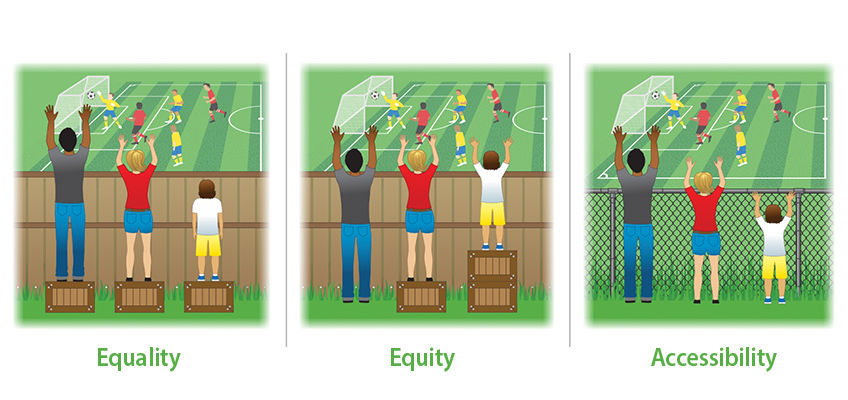
Do you notice the differences between the three scenarios above? In the first scenario, each child gets exactly the same support. The second scenario demonstrates how each child gets what is needed to access the ball game. The third scenario presents a thought-provoking concept: Why don’t we make things accessible for all from the beginning? Herein lies the bedrock of Universal Design for Learning (UDL). According to the UDL guidelines from CAST, UDL diminishes barriers and amplifies learning for all students.
Teachers that apply UDL principles to their teaching provide multiple means of engagement, representation, and action and expression. CAST defines UDL as “a framework to improve and optimize teaching and learning for all people based on scientific insights into how humans learn.” Students have multiple options for how to gain information, how to process the content, and how to show understanding and mastery of the material. As illustrated by the scenario above, “UDL aims to change the design of the environment rather than to change the learner. When environments are intentionally designed to reduce barriers, all learners can engage in rigorous, meaningful learning.”
Embedded in the concept of UDL is the essential right to accessibility. Accessibility can mean many different things, but when we think about education, accessibility applies to teaching environments, materials, and strategies. The days of handing every student the same worksheet are over. Now that same worksheet can be scanned by an app and read to the student. Another student may need to leave answers orally using a dictation app, while another may use a translation app to have the content read in a native language. Our classrooms are full of diverse learners, and by making the content accessible to all learners, students can show what they know in a multitude of ways.
Teachers may initially be overwhelmed by the thought of making all content, materials, and environments accessible, which is why developing content with accessibility in mind is essential.
Here are a few resources to get started:
(This article originally appeared in the fall/winter 2018 issue of The Decoder).